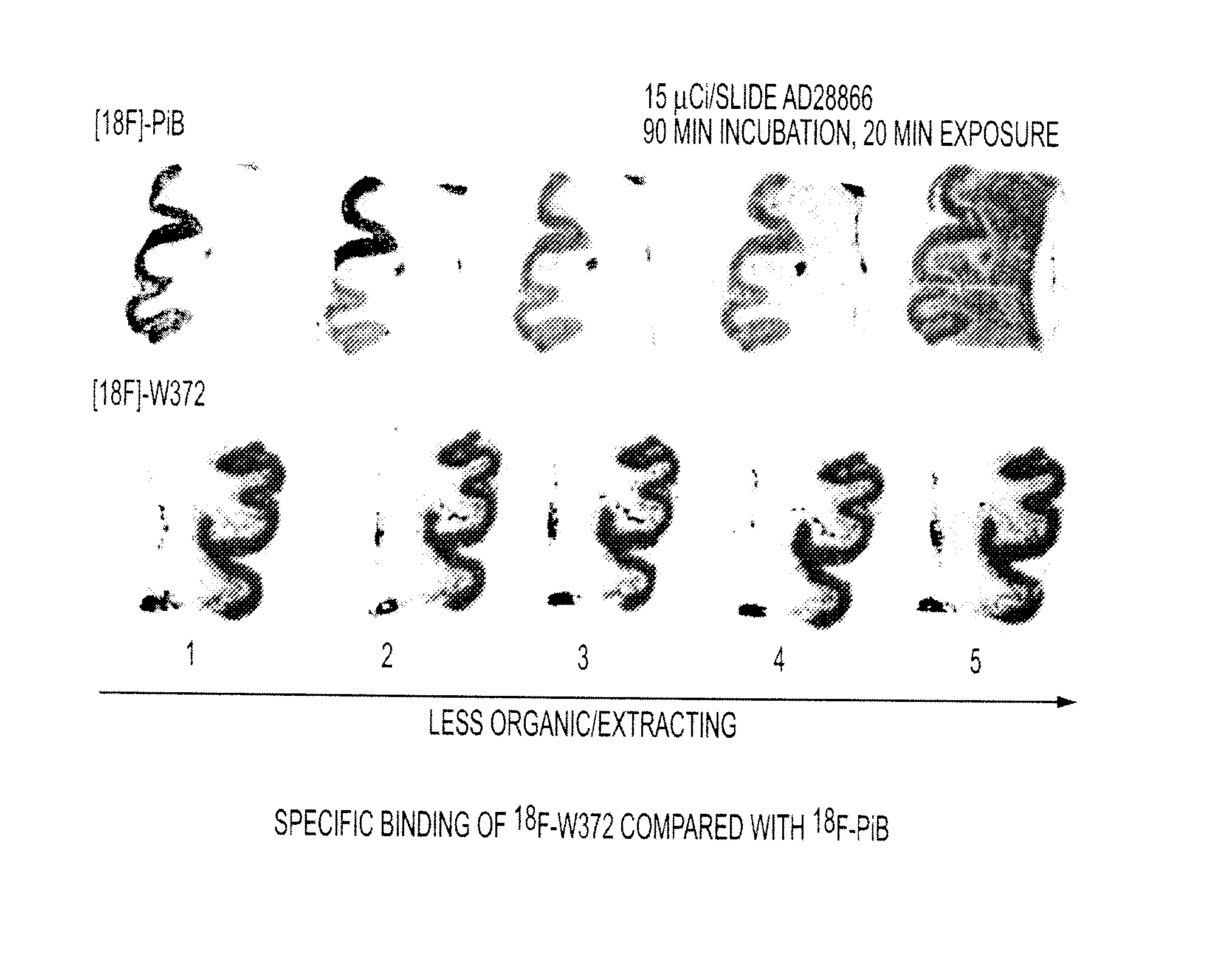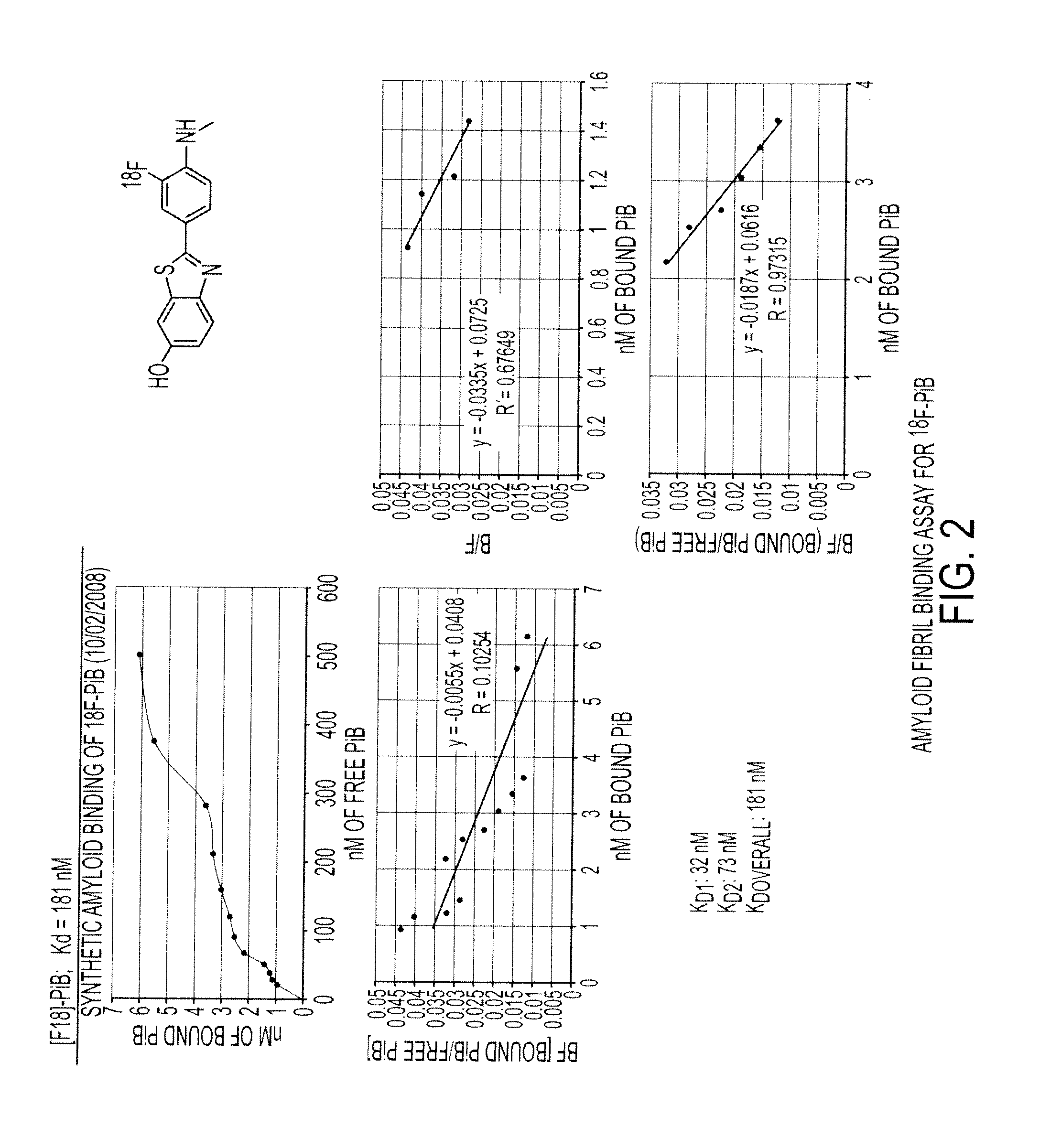Imaging Agents Useful for Identifying AD Pathology
a technology of amyloid binding and imaging agent, which is applied in the field of amyloid binding compounds, can solve the problems of increasing the risk of developing alzheimer's disease, requiring invasive procedures such as spinal taps, and the method has not proven reliable in all patients, so as to increase the binding of the compound and improve the effect of treatment or prophylaxis
- Summary
- Abstract
- Description
- Claims
- Application Information
AI Technical Summary
Problems solved by technology
Method used
Image
Examples
examples
Synthesis of UG-4-69
[0305]
Preparation of 2-(4-(dimethylamino)phenyl)thiazole-5-carbaldehyde (3)
[0306]To a 10 mL round bottomed flask equipped with a magnetic stir bar and reflux condenser containing dioxane (3 mL) was placed 1 (0.1 g, 0.61 mmol) and 2 (0.14 g, 0.73 mmol). To this solution sat. NaHCO3 (3 mL) and Pd(Ph3P)4 (0.07 g, 0.06 mmol) were added and the reaction was heated to 100° C. for 4 hrs. The reaction was cooled to RT, filtered through celite, then poured into water (20 mL) and extracted into EtOAc (3×15 mL). The combined organic extracts were washed with water (15 mL), brine (15 mL), dried over MgSO4 and concentrated in vacuo. The residue was purified over silica gel using DCM:Hexanes (4:1) as an eluent to afford 3 (0.1 g, 71%) as a white solid.
[0307]LC / MS: Expected for C12H12N2OS: 232.0; found: 233.0 (M+H+).
Preparation of (E)-4-(5-(4-methoxystyryl)thiazol-2-yl)-N,N-dimethylaniline (264)
[0308]To a 10 mL round bottomed flask equipped with a magnetic stir bar and reflux c...
PUM
| Property | Measurement | Unit |
|---|---|---|
| temperature | aaaaa | aaaaa |
| temperature | aaaaa | aaaaa |
| temperature | aaaaa | aaaaa |
Abstract
Description
Claims
Application Information
 Login to View More
Login to View More - R&D
- Intellectual Property
- Life Sciences
- Materials
- Tech Scout
- Unparalleled Data Quality
- Higher Quality Content
- 60% Fewer Hallucinations
Browse by: Latest US Patents, China's latest patents, Technical Efficacy Thesaurus, Application Domain, Technology Topic, Popular Technical Reports.
© 2025 PatSnap. All rights reserved.Legal|Privacy policy|Modern Slavery Act Transparency Statement|Sitemap|About US| Contact US: help@patsnap.com



